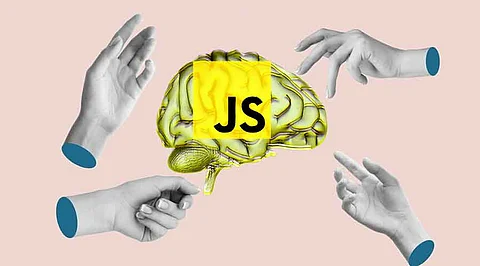
- Insights
- Cryptocurrencies
- Stocks
- White Papers
- Industry
- Geography
- Insights
- Cryptocurrencies
- Stocks
- White Papers
- Industry
- Geography


The creation of online apps has been greatly aided by the potent language known as JavaScript. With the introduction of ML and Data Science, JavaScript's application has grown even more. JavaScript libraries have been created to make it easier to incorporate data science and machine learning into web development. By offering pre-written JavaScript code, these libraries facilitate developers' integration of intricate machine learning algorithms and data science techniques into their projects. As a result, JavaScript and its libraries are essential to the convergence of data science, machine learning, and web development. Here are 10 JavaScript libraries for data science and machine learning:
A JavaScript library for neural networks and machine learning is called Brain.js. It makes it easier to include sophisticated neural networks into web development by employing GPU for computations and smoothly switching back to basic JavaScript if GPU is not available.
An open-source JavaScript library called TensorFlow.js is used to train and implement machine learning models. It enables programmers to create machine learning models in JavaScript and use them straight in Node.js or the browser.
In neurology, the point at which electrical signals go from one nerve cell to another is referred to as the synaptic cleft. It's also the name of two digital companies: Synaptics, which creates amazing experiences by fusing IoT and AI with Human Interface technology, and Synaptic, which offers alternative data platforms with actionable insights for investors and financial institutions.
The AXA group created the open-source NLP.js package for creating bots. Along with capabilities like entity extraction, sentiment analysis, and automatic language identification, it supports forty different languages.
A little JavaScript library for natural language processing is called Compromise. With features like verb conjugation, noun pluralization, and more, it offers a quick and easy way to parse and work with text. Its purpose is to convert text into useful data by making smart, constrained judgments.
A JavaScript library called D3.js is used to create dynamic, interactive data visualizations in web browsers. It is renowned for its efficiency and adaptability and makes use of the HTML5, CSS, and Scalable Vector Graphics (SVG) standards.
An open-source JavaScript package called Chart.js makes it possible to create dynamic, interactive data visualizations in web browsers. It is renowned for its adaptability, effectiveness, and compatibility with all current browsers and renders using HTML5 canvas.
A collection of machine learning tools created by the mljs organization is called ML.js. Mainly kept up to date for browser use, it offers a full suite of tools for JavaScript machine-learning applications.
A comprehensive math library for JavaScript and Node.js is called Math.js. It has many built-in functions and constants, and it allows symbolic computation. It functions with a variety of data types, including matrices, fractions, units, large and complex numbers, and numbers.
A machine learning library called Brainstorm.js makes it possible to create and train deep neural networks using a straightforward syntax. Loss functions, layers, activations, and optimizers are just a few of the characteristics that it supports. It offers a user-friendly and adaptable API and can operate both in a browser and on Node.js.
